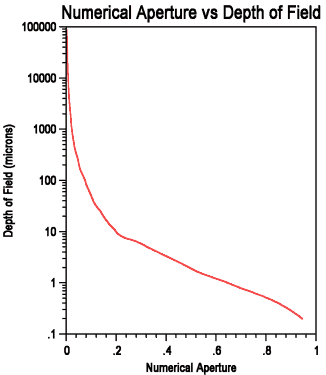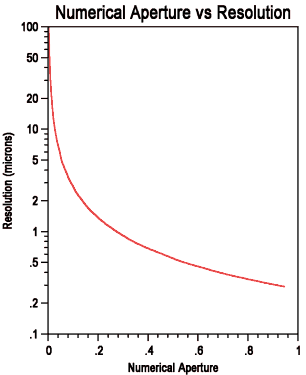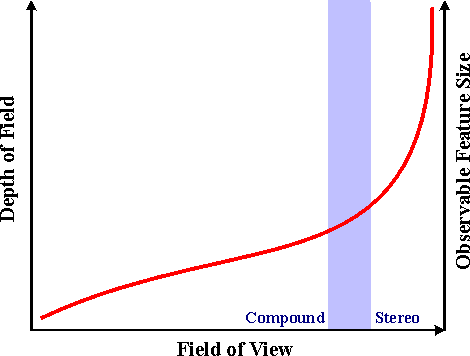Compound vs. Zoom Microscopy
as the Field of View increases, both The optical microscope can be found in 3 basic configurations based on the size of the area to be viewed and the size of the detail that must be resolved. For a stereoscopic view (3D) of sample areas from 100mm wide down to 1mm wide, a Stereomicroscope is used. For a two dimensional view of sample areas from 100mm wide down to 1mm wide, a Zoom system is used. And, to view areas of samples 1mm wide down to 0.045mm wide, a compound microscope is required. The three basic parameters that define the characteristics of each of these are: Resolution -- minimum size of observable detail The performance specification that defines the Resolution and Depth of Field capability of a lens is the Numerical Aperture. When used with the Lens Magnification, it determines the applicability of the lens to the imaging requirement. |
||
 |
 |
|
|
||



